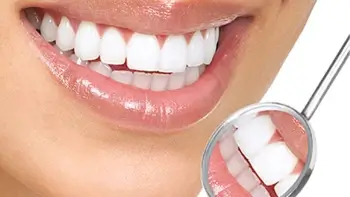
How Are Zirconium Veneers Applied?
Zirconium veneers are applied by dentists. First, the dental issue is identified. Before starting treatment, local anesthesia is administered to the relevant area to prevent sensitivity. The teeth are reduced to an appropriate size. Impressions are taken from the reduced teeth using soft materials or digital methods. The tooth color is selected based on the patient’s preference using a color scale.
Temporary teeth are placed to prevent sensitivity and maintain aesthetics while the zirconium veneers are prepared. The veneers are typically ready within 3-5 days. Once approved by the patient, the temporary teeth are removed, and the zirconium veneers are bonded using special transparent adhesives. Patients should avoid eating for half an hour after bonding. Regular check-ups are scheduled as determined by the dentist.
Features of Zirconium Veneers
Zirconium veneers can be applied to both upper and lower teeth. They are commonly used for durability in posterior teeth and aesthetics in anterior teeth. Zirconium veneers offer numerous advantages, including:
Who Can Get Zirconium Veneers?
Anyone dissatisfied with the appearance of their teeth and seeking a more aesthetic smile can opt for zirconium veneers. However, individuals under 18, whose jaw development is ongoing, should wait until development is complete. Zirconium veneers are commonly chosen by those with:
Zirconium Veneer Models and Lifespan
The lifespan of zirconium veneers varies by individual. Some may use them for 5-10 years, while others can use them for a lifetime. Those who attend regular dental check-ups and maintain good oral hygiene can use zirconium veneers for many years. Treatments performed in non-clinical settings may have a shorter lifespan and could harm the patient’s health. To achieve a healthy and aesthetic smile, visual and structural issues are sometimes addressed with aesthetic composite fillings. When this is insufficient, porcelain laminates or zirconium veneers are used. For porcelain laminates, minimal or no tooth reduction is typically required. If porcelain or zirconium applications are deemed suitable, patient feedback during trial fittings allows for adjustments.
Difference Between Zirconium Veneers and Laminate Veneers
The primary difference between zirconium and laminate veneers lies in the surface they cover. Zirconium veneers fully encase the tooth, while laminate veneers are thin porcelain layers applied only to the front surface of the tooth with minimal reduction. Laminates are applied individually to each tooth.
Difference Between Zirconium Veneers and Metal-Supported Veneers
The main difference is the supporting material under the porcelain. Zirconium veneers use zirconium beneath the porcelain, while metal-supported veneers use a metal framework. Zirconium veneers are light-translucent, giving teeth a natural appearance, whereas metal-supported veneers have a matte white look. Zirconium veneers promote gum health due to their compatibility, while metal veneers may cause gum discoloration. Allergic reactions from metal are avoided with zirconium veneers, which also prevent bad breath and taste alteration.
Age Limit for Zirconium Veneers
There is no strict age limit for zirconium veneers. They can be comfortably applied to individuals who have completed their developmental phase. For those still in development, it’s better to wait until jaw growth is complete.
Frequently Asked Questions About Zirconium Veneers